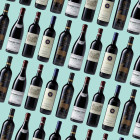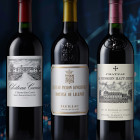Fine wine investments have displayed relative stability in 2020 despite the significant human and economic impact of the global coronavirus pandemic. The Liv-ex 1000, an index that tracks the price of 1000 of the world’s most-traded fine wines, had returned 0.96% year-to-date as of the end of September and had only dipped by around 3% when it hit its lows in the spring. This compares to double digit losses in most equity markets early in the year, which have been followed by ongoing price swings beyond those experienced by fine wine.
The Liv-ex 1000’s recent performance highlights fine wine’s strengths as an investment. The asset class remains an attractive option for those seeking stability and diversification amid the ongoing economic disruption. While we recognise the potential for near-term pricing volatility, we believe the asset class’s track record and market dynamics could increase the importance of this ‘passion investment’ in investors’ portfolios both during the current coronavirus pandemic as well as over the long term.
History of stability
Relative stability during previous downturns forms one of fine wine’s core credentials. Looking at the 2008 global financial crisis, the Liv-ex 1000 dropped roughly 10% from its peak in August 2008 to a low in December. At this point, it began a steady recovery, recouping all its losses by the end of 2009. By contrast, major equity indices plummeted by over 30% in many cases and remained more volatile during their recoveries.
Figure 1: Fine wine’s strong and stable growth
Liv-ex 1000 vs other major investments since 2005
Source: Bloomberg, S&P, FTSE, World Gold Council & iShares data as of 30 September 2020
Gold, an asset often regarded as a safe haven during periods of uncertainty, stands out as the top performer during the global financial crisis. However, the precious metal then saw a prolonged correction in the years that followed. The Liv-ex 1000, by contrast, did not experience a correction to this degree over the same period. As a result, the Liv-ex 1000 posted a lower volatility over a 15-year period than gold as well as major equity indices (see Figure 2).
Fine wine’s stability does not come at the expense of attractive returns. In the 15-year period ending September 30, 2020, the Liv-ex 1000 delivered a total return of 234% and an annualised return of 8.4% (see Figure 2). This time frame covered both the global financial crisis, the worst of the coronavirus selloffs, as well as a rebalancing of the fine wine market itself in 2011-2014 when Bordeaux prices declined in favour of wines from other regions.
Figure 2: Attractive returns alongside low volatility
Annualised returns and volatility since 2005
Source: S&P 500, FTSE, Liv-ex, CISDM data as of 30 September 2020
Although gold and some equity markets produced higher return figures, fine wine posted superior risk-adjusted returns. This is demonstrated by the Sharpe Ratio, which is a measure of the average return of an asset in excess of the risk-free rate and relative to its volatility. In short, the higher the Sharpe Ratio, the higher an asset’s risk-adjusted return. Over the past 15 years, fine wine posted a Sharpe Ratio of 1.53 whereas gold produced a Sharpe Ratio of 0.57 and the S&P 500 0.61. Of the asset classes discussed above, the Hedge Fund index delivered the next highest figure at 0.74. What this means is that fine wine has been one of the most consistent investments during different market backdrops with smaller swings in pricing.
Market dynamics provide anchor
While history does not always provide a reliable indicator for future performance, the supply and demand dynamics of fine wine form a key reason why it can continue to be a reliable investment in our current situation. We recognise the economic downturn due to coronavirus is unique but what will remain consistent is the limited supply of investment-grade wines. Production of investment-grade wine is strictly controlled by various Appellations d’Origine Controlee (AOC) in France and their equivalent in other countries. Therefore, even if demand were to be temporarily impacted by an economic downturn and hospitality sector disruption, the supply side of the equation will remain relatively stable. Conversely, equity and bond market investments can experience significant price swings due to shifts in policy from governments and central banks. Oil supply can change due to agreements by OPEC and other exporting countries. Therefore, these other asset classes are more directly tied to the external factors and sentiment in the wider economy. This is not to say wine investments are immune to an economic downturn but that their limited and fixed supply provides a stabilising influence.
Another contributing factor to fine wine’s stability is that it is generally less liquid, or harder to quickly buy and sell, than other more conventional asset classes. While at first this might seem like a point of concern, reduced liquidity can provide an advantage during sudden market dislocations. Assets that cannot typically be sold as quickly amid a market shock, such as the coronavirus outbreak, insulates them from panic selling. This means their value tends to hold much steadier than those of liquid assets. While a piece of news can alarm investors to such an extent that a stock or even a whole market can lose a significant portion of its value in a single day, less liquid assets won’t be affected at the same speed or even to the same extent. Therefore, less liquid financial instruments in other asset classes have seen increased popularity among investors.1 In our opinion, this underscores the viability of fine wine as an investment during market disruptions.
Fine wine provides diversification
Fine wine forms an important source of diversification from more mainstream asset classes due to its low correlation to equity markets (see Figure 3). During times of heightened volatility, holding assets that behave differently and whose prices are based on different underlying drivers can help protect an investment portfolio.
Partly due to their limited supply, fine wine investments are generally regarded as a specialised asset class. We believe this is part of their lasting appeal as a ‘passion’ investment. Demand for fine wine goes beyond its immediate benefit as a financial instrument. This does not mean fine wine is immune to downturns, but it will likely continue to be impacted by internal factors and behave differently than equity, bond and major commodities which are more closely tied to economic sentiment and public policy. While point of difference can be a favourable trait amid all market backdrops, it can be particularly beneficial during an unprecedented market environment such as that created by the coronavirus pandemic.
Figure 3: Low Correlation to Equity Markets
Correlation to S&P 500 by asset class
Analytical approach essential
Despite its potential to remain relatively stable, investors should remain alert to changes within the fine wine industry. The coronavirus pandemic looks set to cause disruption globally well into 2021, at the minimum. Restaurants, hotels and other hospitality venues will experience further hardship and although supply of investment grade wine is fixed, demand could suffer in the months ahead along with the hospitality industry. Although some markets saw jumps in online trade in recent months to counter the drop in restaurant business, we cannot expect fine wine prices to remain unaffected by the ongoing pandemic.
However, the impact may not be felt evenly by the entire fine wine asset class. By monitoring trends within fine wine, investors can potentially stay ahead of pricing shifts. For example, prices of Bordeaux wines declined in the three-year period from April 2011 to April 2014 in the wake of the global financial crisis and the ensuring eurozone debt crisis.2 But many observers had previously pointed to a bubble forming following the highly rated 2009 and 2010 vintages, meaning the cause of this drop was largely internal to the fine wine market rather than external.3 Around the same time, prices of Burgundy wines skyrocketed, helping the larger fine wine index post gains over the longer term.4
Investors should remain sensitive to similar shifts within the asset class in the wake of the current disruption. The cancellation of the usual in-person en primeur event earlier this year in Bordeaux resulted in lower price expectations in the short term.5 Elsewhere, some have pointed to the high prices for Burgundy wines leading into the outbreak of coronavirus as signs that this market may experience a near-term correction.6 Indeed, as of the end of September, the Burgundy 150 index was one of the few still in negative territory for the year.7 But even if these most established markets experience turbulence, other regions could benefit. Early data form 2020 sees wines from Italy, Champagne and Rhone posting strong gains.8 Our point is not that this trend will definitely continue but that coronavirus-related volatility may result in shifts within the fine wine trade rather than hurting the asset class as a whole.
These shifts can provide opportunities. Even within market segments that experience short-term weakness, evidence suggests prices should recover over the medium to long term. Helped by a strong 2016 vintage, Bordeaux wines rebounded strongly from 2016 to 2018. Therefore, we believe discounted en primeur pricing or other declines in established markets represent potential opportunities for investors with a close eye on market developments.
Overall, we believe the current unprecedented situation highlights both fine wine’s credentials as well as the need for a research-based approach to investing to stay ahead of shifts within the asset class. With any investment comes uncertainty, especially during the coronavirus pandemic. However, a disciplined and analytical approach can unlock fine wine’s potential as a source of stability and diversification in an investment portfolio.
1 https://expertinvestoreurope.com/illiquid-asset-classes-surge-in-popularity/
2 Liv-ex Bordeaux 500
3 https://www.theguardian.com/lifeandstyle/2011/may/01/bordeaux-wine-prices-china
4 Liv-ex Burgundy
5 Cult Wines Bordeaux En Primeur Report 2019 Vintage; https://www.forbes.com/sites/businessreporter/2020/10/20/covid-proof-your-portfolio-with-fine-wine-investment/#5061db20245a
6 https://hospitalityinsights.ehl.edu/covid-19-wines
7 Liv-ex Burgundy 150
8 Liv-ex; https://www.abcmoney.co.uk/2020/09/21/the-state-of-the-fine-wine-market-during-the-covid-19-pandemic/






